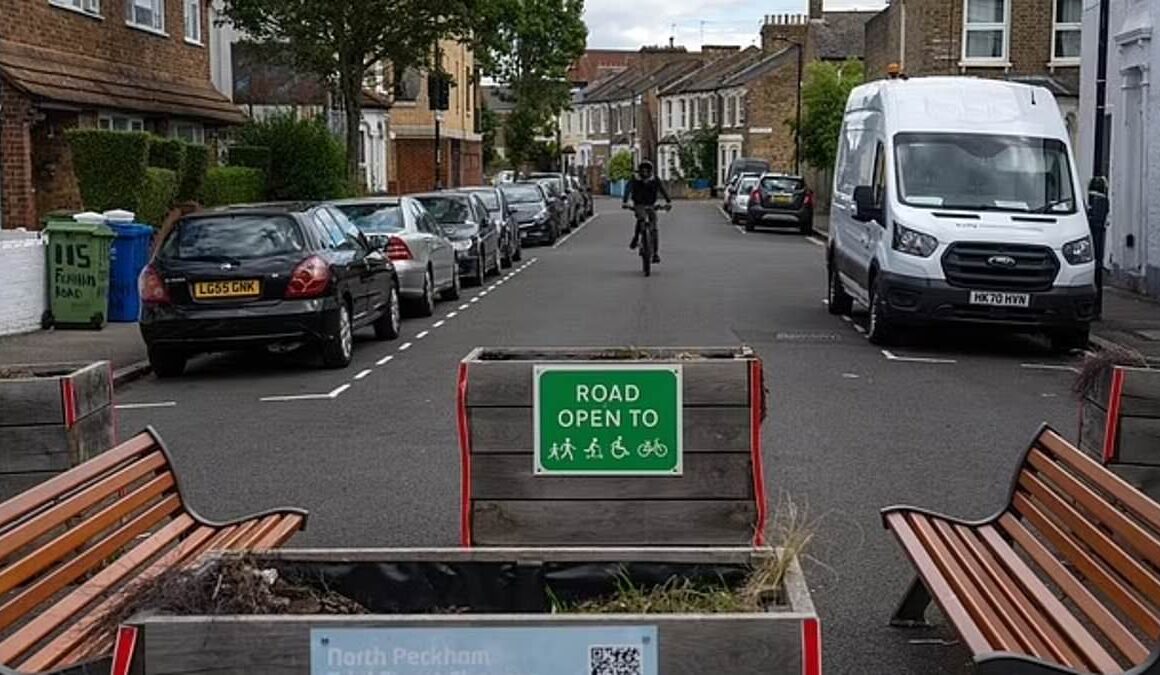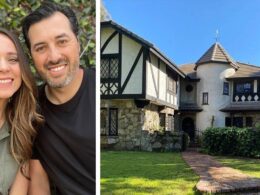Sadiq Khan‘s unpopular Low Traffic Neighbourhoods scheme has been given the green light to expand, despite the programme being blamed for delaying emergency services and causing more traffic.
More than 30 more LTNs could be built across the capital after it has emerged the Mayor’s transport body, Transport for London, has earmarked funding for the scheme.
It comes after the ‘traffic-calming measures’ were first introduced by Khan in Spring 2020, as part of his vision for 80 per cent of all trips in London to be made on foot, by cycle, or using public transport by 2041.
The scheme – which stops non-local motorists from driving through residential areas through the use of CCTV cameras, bollards and penalty fines – has proved divisive, with locals holding protests against the measures which they say have made traffic worse.

The Low Traffic Neighbourhoods scheme, introduced by London Mayor Sadiq Khan (pictured on June 1) has got the go-ahead for another 30 to be built.

The much-hated LTN scheme began rolling out in Spring 2020. This LTN in Streatham Wells, south London, was introduced encourage more walking but caused traffic jams
Around 120 LTNs have been introduced since the beginning of the scheme, and about 100 are still in place.
However, the Evening Standard has now reported that TfL has provided councils with funding ‘for the development of more than 30 more potential LTN schemes’.
Revealed in TfL’s latest annual progress report on the Mayor’s transport strategy, it states that LTNs ‘remain a key part of the Healthy Streets approach and we continue to support boroughs’ implementation of schemes with both funding and technical support’.
This is despite many neighbourhoods where the scheme was implemented complaining that it isolated vulnerable older residents, worsened traffic, and pitted neighbours against each other.

LTNs have been established across London with bollards, CCTV cameras and penalty fines in place
In fact, residents of one LTN in Streatham Wells, south London, succeeded in getting it scrapped after it caused nightmare traffic since being introduced in October last year.
The scheme was axed in March after it led to such bad congestion that buses took two hours to travel less than three miles.
Figures from the annual progress document have also revealed that TfL allocated nearly £87million to boroughs in 2023/4 for the ‘healthy streets’ scheme which includes LTNs, cycle lanes, and 20mph speed limits.
Meanwhile, an initial £66m was earmarked for boroughs for such schemes for the current 2024/25 financial year, but it is expected to exceed £80.4m by the end of the year.

A sign warning motorists not to drive down Valley Road, part of a group of streets that made up the Streatham Wells LTN

The congestion was so bad at peak times that buses were being diverted around the zone
Another controversial LTN was also ripped out after a London borough mayor ruled it divided the community and pushed cars onto roads where ‘less affluent residents’ lived.
Tower Hamlets introduced the LTN on roads around Columbia Road’s famous flower market, Brick Lane and Old Bethnal Green Road during the pandemic in a bid to reduce pollution and make streets safer.
But the planters, lockable bollards and cameras catching out drivers in Bethnal Green were removed late last year.
Making the decision, the mayor of Tower Hamlets, Lutfur Rahman said at the time: ‘While LTNs0 improve air quality in their immediate vicinity, they push traffic down surrounding arterial roads, typically lived on by less affluent residents.’








